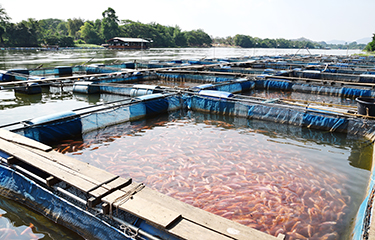Over 90 percent of global blue food production faces substantial risks from environmental changes, with leading seafood-producing countries – including China, Norway, and the U.S. – running the highest risks, according to a new study.
Published in the scientific journal Nature Sustainability, the study, “Vulnerability of blue foods to human-induced environmental change,” included a global analysis assessing the vulnerability of countries’ fisheries and aquaculture production in the face of anthropogenic impacts, or environmental changes directly caused by human activities. Specifically, anthropogenic threats can reduce the amount of high-quality blue food countries can produce by altering water quality and habitats, causing shifts or declines in stocks, and compromising food safety by contaminating fish with pathogens or pollutants that are toxic for human consumption.
“These findings … pose significant consequences for the production and safety of aquatic, or ‘blue,’ foods, which are increasing in demand across global diets and comes at a time when global food security is already reeling from multiple crises, including the impact of climate change,” Xiamen University Professor Ling Cao, a co-author of the study, said.
Produced as part of the Blue Food Assessment – an international joint initiative bringing together over 100 scientists to understand and promote sustainable blue food projects – the research identified the most relevant human-caused stressors that affect blue food quantity and quality, such as a rise in sea levels, eutrophication, and pesticide use.
Approximately 3.2 billion people rely on blue foods worldwide, the study stated, making these products pivotal in mitigating malnutrition, particularly in low-income and small island developing states (SIDS), as a crucial source of animal protein, essential fatty acids, and critical micronutrients.
“From the world’s biggest producers to small island states, greater mitigation and adaptation strategies need to be implemented to avoid the worst-case scenarios of environmental stressors significantly impacting food security and food safety in populations dependent upon blue foods,” Cao said.
The most significant concerns related to response capacities lie in ...
Photo courtesy of Daracha Thiammueang/Shutterstock








